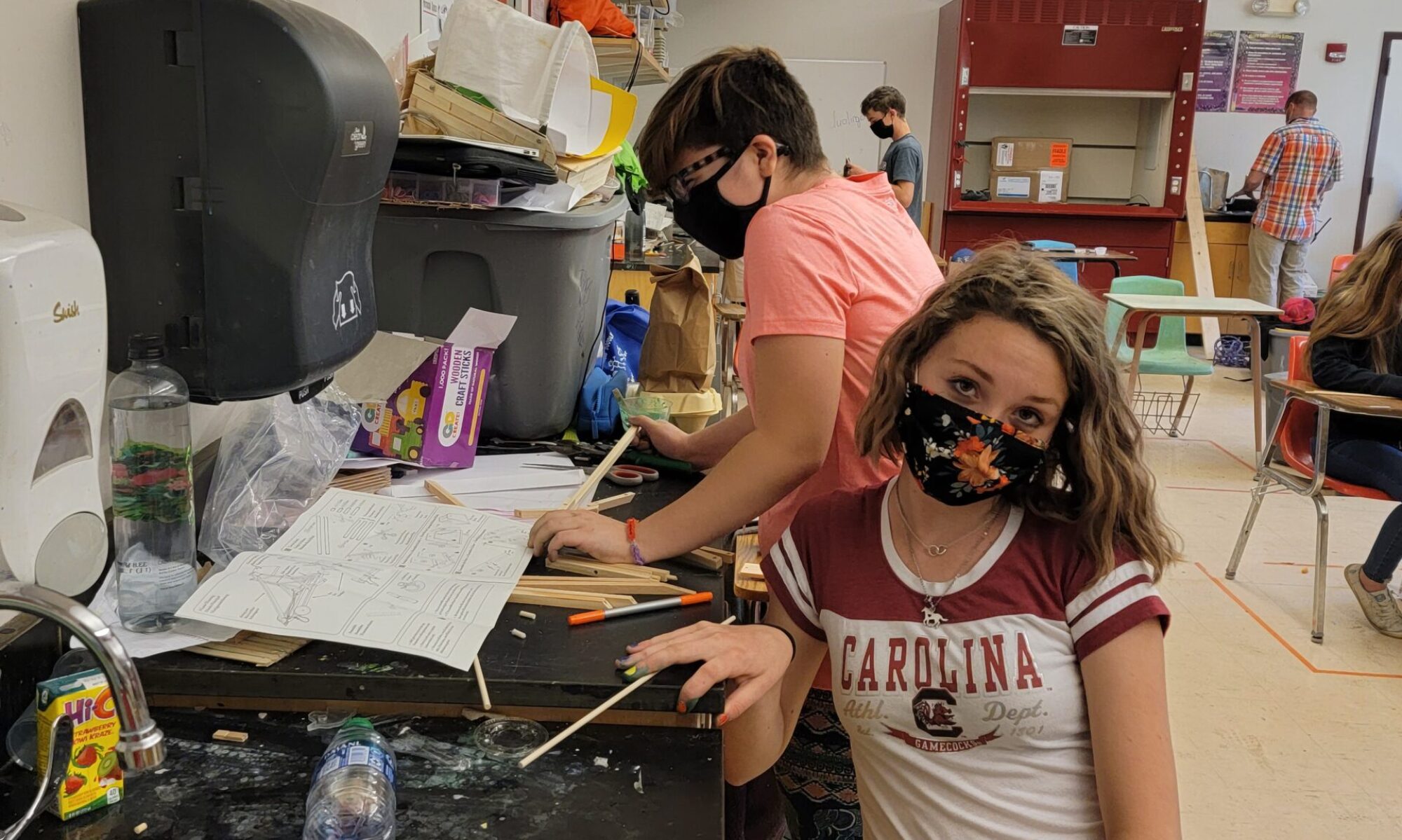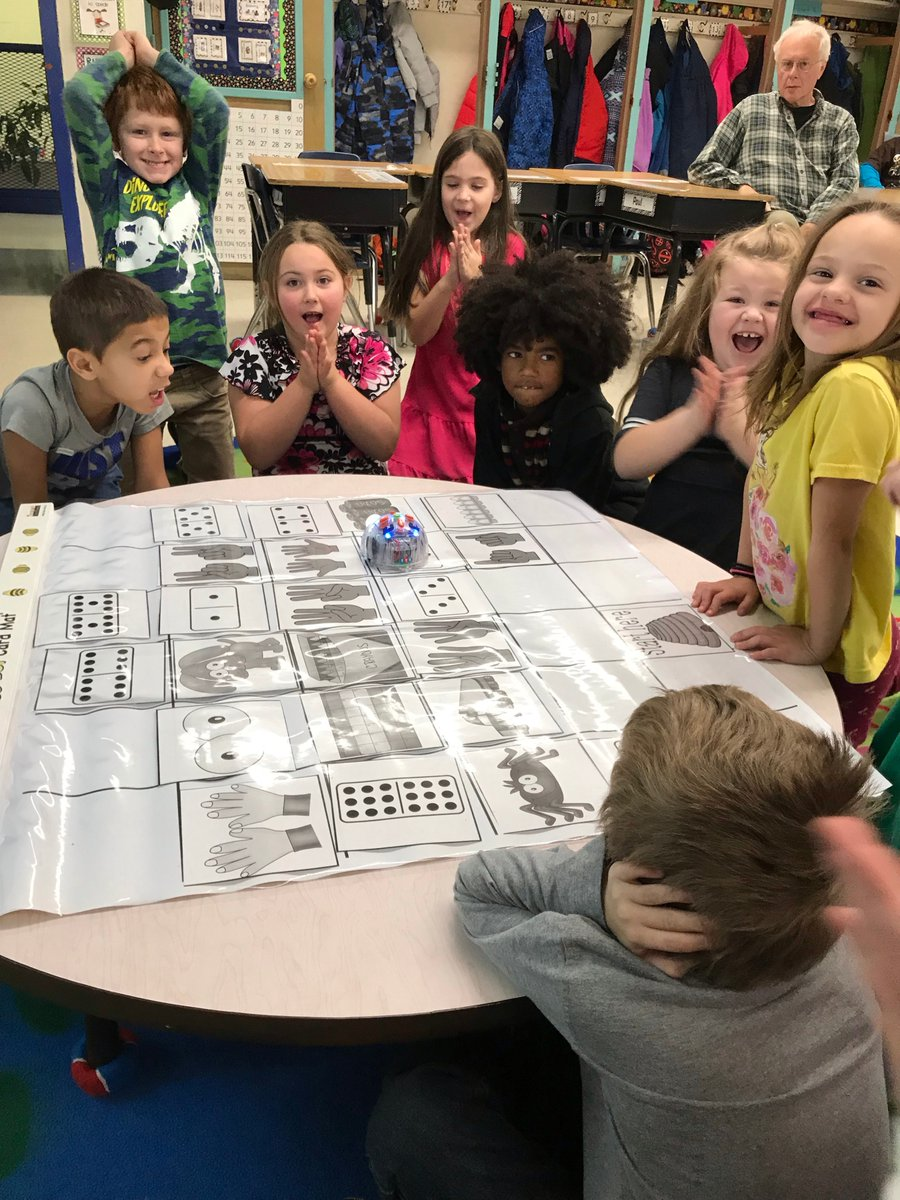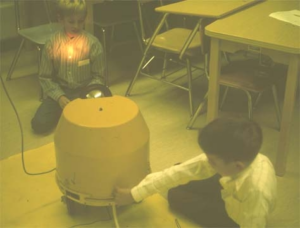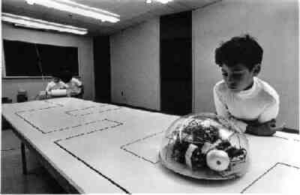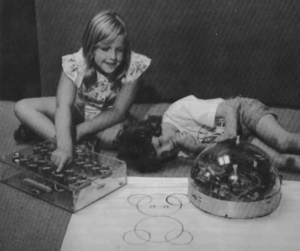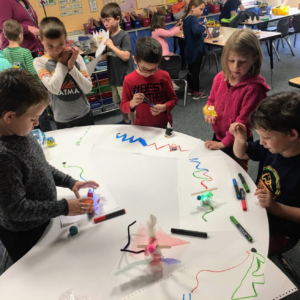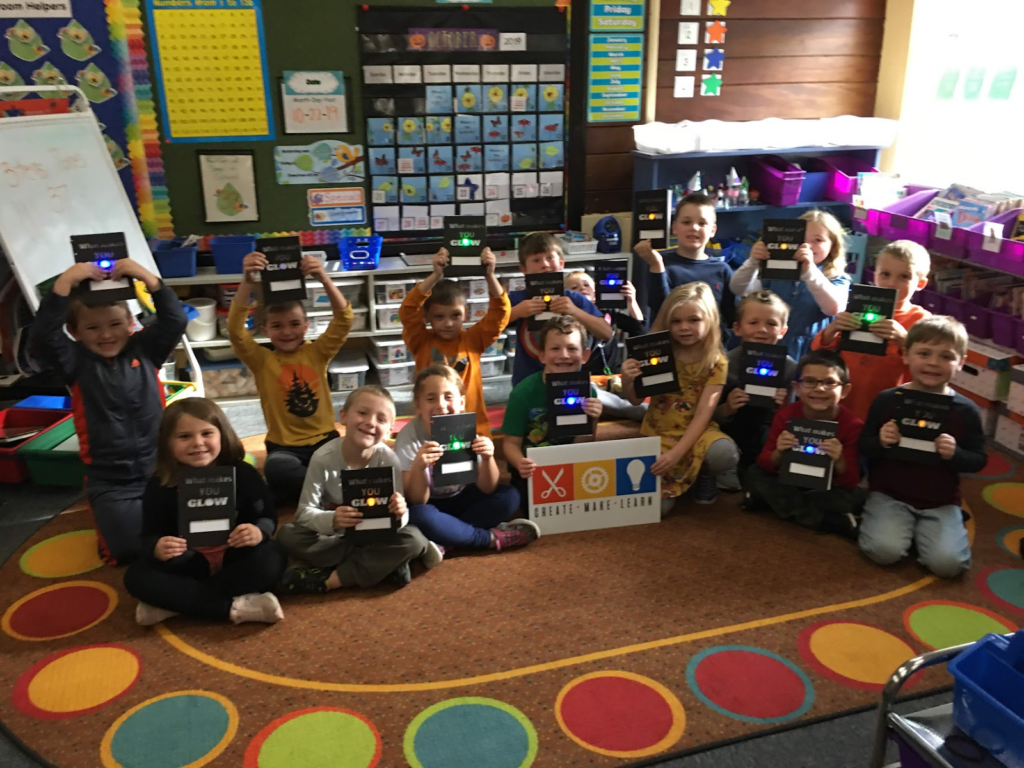Although digital tutorials and online coding platforms are great tools, adding physical objects to the mix brings a new dimension to learning how to code. Yes, codable robots can help students learn to code, but more importantly the students are coding to learn.
Much of the earliest research around using physical objects as learning objects was conducted at MIT more than 50 years ago.
(Images courtesy The Cybernetic Zoo)
And as computing power has increased and become more affordable, access to codable robots for students has increased.
‘Visual’ representation of algorithms that may otherwise feel abstract can be learned by young children even before they learn to read. Codable robots can help students visualize mathematical concepts, and with the right prompt they can be used to help students develop science and engineering practices, also. They connect to many literacy standards, too.
Students in Waitsfield, Warren, and Fayston used their creativity, found and crafting materials to create a new character who glows. Plus, a fantasy habitat for that character.
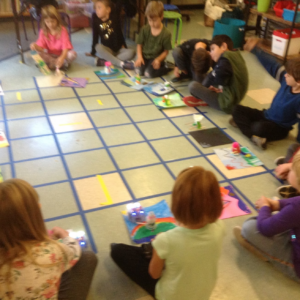
The students placed their characters around a masking table grid, and then used code to help their Beebots travel to the different characters. As the students became more comfortable using code to direct the robots, they started to add obstacles for the robots to navigate around.
Students were invited to design their character that could glow and travel when placed on top of an Ozobot. Ozobot stations were available for the the students to test their creations. The students then used their characters as story prompt for their upcoming writing assignments.
These students at Shaftsbury Elementary School, in Shaftsbury VT, not only created characters and coded them to move and glow along a story arc, but also assembled simple circuits. They embedded the circuits in glowing book covers.
Does your school have codable robots? How are you using them to help students learning to code or code to learn? How are you integrating them into various disciplines?
